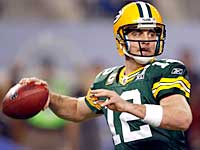In a perfect world you could completely commit to training and devote every aspect of your life to improve you’re training. Alas! You aren’t special and don’t get paid to perform and compete (I know this realization is hard to understand). Instead, you might have a job, have to study for exams, or have to help wipe your child’s bum. Whatever the case, it may cut into your training and learning how to work around that is important.
Stress The Whole Body
I haven’t had regular access to a gym or a repeating schedule for quite a while (probably six months), yet I’ve gotten a bit bigger, a lot stronger, and rehabbed back from a gnarly hip injury. The key with shoddy scheduling is to train the entire body when finally getting access to a gym.
This doesn’t mean you hit every lift you can think of, but emulate what most linear progressions consist of: a squat, a press, and a pull. Some days I have just sn/cj while other days I’ve sn, cj, squat, pressed, curls, and did RDLs. One day I squatted, rowed, and did RDLs (with no press movement). I’ve benched, squatted, did RDLs, and weighted pull-ups. Each week I try to bench and press once each, squat and RDLs at least once, and dabble in various assistance (at least once each of rowing, curling, weighted pull-ups, and round back extension). The point is that each day has lifts that use a lot of muscle mass and work on the structures that make the body strong: hips, back, legs, and shoulders. If your schedule is shoddy, aim to perform some of the basic lifts a minimum amount of times throughout the week. This will save you from having to figure it out each time you step in the gym.

Don’t Wreck Yourself
When you do finally get to train, don’t be a wise guy. You wouldn’t want your lifting exposure to give you crippling soreness. Ease into heavier weight over time, be patient, and don’t aim to PR every day. Save the most stressful lifts, like deadlift, for the end of your training week (if you know when you’ll get to the gym again). Don’t hesitate to work in RDLs or round back extensions in its stead; these exercises can help augment the deadlift when you finally get the time to focus on it again.
Know When To Back Off
Just because you finally get to train doesn’t mean your body is ready. When I was in Australia, I only trained twice: the first day felt really shitty (I squatted, pressed, and did pull-ups), then the second day I matched a PR on snatch and came close on clean and jerk. However, if my body wasn’t ready on day two, then I would have just done some sets across instead of pushing the weight.
Recently I tried to snatch when I wasn’t feeling that great. Maybe it’s because I squatted and did RDLs two days before, but I just wasn’t feeling it that day. I ended up missing simple snatches to the point where I audibly said “Fuck this,” and left to go bench. Then my first set at a regularly easy weight on bench was difficult; I racked it after the first rep and was all pissed off. I declared that I was done training for the day and just did some DB rows and dips. My body was not ready.
Ease back the training session if you aren’t feeling great. You can do this by changing the exercises (remember the “When in doubt, train your back” post?) or reducing the volume and load of your intended workout.
Maintain Mobility
Some times the limiting factor is the body being all wound up from sitting at a desk, in a car, or on an airplane. If you have a good habit of working on your mobility on a daily basis, then these events won’t smash you as hard. Take care to do extra mobility work when you have been in any crappy position for a long time. “Crappy position” would imply that your knees and hips are bent and you are slouching forward. You can’t train well if you aren’t pliable enough to go through a ROM properly.



